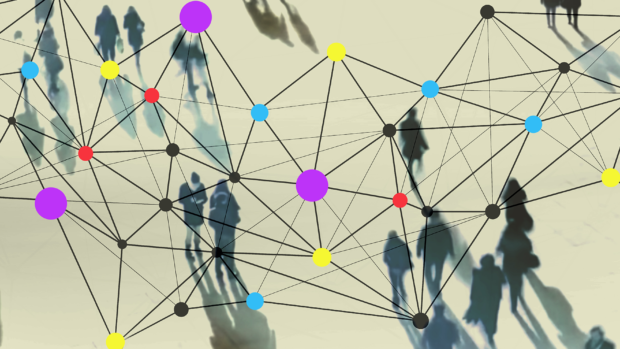
Blockchain popularity continues to gather pace. With many organisations adopting the technology, understanding what blockchain is and why it’s the future is becoming more important than ever. We will be running through blockchain for beginners to impart a basic understanding of the technology, its applications, and how it can be applied to everyday business life.
What is blockchain?
When reading about blockchain, it can be quite an overwhelming topic due to complex and niche jargon. But, at its core, the concept of blockchain is relatively simple. It can be defined as a way of recording data that cannot be altered, hacked, or faked. This is achieved through its decentralised structure.
Blockchain is a type of distributed ledger technology (DLT) that is signed with what’s known as a hash. A hash is essentially a unique code that cannot be changed or altered. This hash will link to previous pieces of data in the ledger, meaning that if one changes, then they all become invalid.
How does blockchain work?
There are three significant areas behind blockchain technology: blocks and nodes
Blocks
To put it simply, the block is where data Is stored along the blockchain. It is the role of the creator of a given blockchain to determine what kind of data is stored within these blocks. One of the best examples to visualise the blocks along a blockchain is to think of cryptocurrency. When transactions are made through a given cryptocurrency, imagine each block created as a receipt.
Nodes
The blocks of data along a blockchain are stored on nodes. Nodes form the main infrastructure of a blockchain. Any device can be a node, may that be a laptop, computer, or a large server. One of the most important aspects about nodes is that they all hold a copy of the same blockchain. These copies are updated with each new transaction. This ensures that at any given stage, each node’s copy will be identical to all the other nodes.
What can blockchain be used for?
There are many industries and large businesses that have already started adopting blockchain technology into their business processes. Some of the best application examples lie within banking & finance, currency, and records of property.
Banking & Finance
The most significant innovation that blockchain brings to the banking industry is the security of transactions and speed. Transactions can be processed in under 10 minutes, therefore helping remove the backlog of transactions, making specific banking processes take up to three days. This can benefit both the business and the customer as banking fees should decrease with blockchain technology.
Currency
By being spread across a network of computers, blockchain allows cryptocurrencies to be used without the need for a central source/authority. Like the banking & finance aspect, this dramatically improves security and removes the need for many forms of transaction fees. In terms of more extensive scale usage, countries with unstable economies and currencies can adopt cryptocurrency to bring a certain level of stability and security.
Records of Property
The levels of security are a significant benefit towards recording data and passing contracts. Blockchain technology can introduce the use of “smart contracts”. Smart contracts can ensure a process is taken step by step. However, the intuitive aspect is that one step cannot be started until the previous one is completed. For example, housing documents cannot be released to the new tenants until they have signed off a digital document based along the blockchain. It helps improve the flow of a process and avoids any potential confusion in addition to the high levels of security.
Smart contracts
Smart contracts are one of the most promising applications of blockchain technology. As of now, they appear to be the aspect that is going to automate and change the way we use data like never before.
Smart contracts will impact both the B2C and B2B experience. From a B2C perspective, we will be able to personalise the user experience according to set conditions. On the other hand, for B2B it will enable us to automate transactions and drastically improve the security of these transactions.
Disadvantages of blockchain technology
While blockchain technology has many innovative uses and continues to grow in popularity, it does come with its downfalls.
Environmental factors
When used to control cryptocurrency, many blockchain networks require a certain level of computing power to crack the proof-of-work algorithms. This has led to companies having server and computing warehouses that consume large amounts of electricity. This theme across the globe has reached the level where it harms the global climate. For example, the Chinese government has claimed bitcoin mining has had a drastic impact on their climate change targets and goals. When using blockchain technology for non-crypto currency applications then this is not a major concern because no currency “mining” takes place.
Costs
More so from a business perspective, the costs to implement, manage, and maintain blockchain technology can be a deterrent for businesses. Due to the complexity and newness of blockchain technology, a premium price is often charged by developers to have processes converted. Even if a business opted for a premade blockchain solution, the prices for licensing, and teething problems for implementation are still a barrier for most.
Blockchain for beginners
For more information surrounding blockchain technology, we recommend reading Khaos Controls whitepaper discussing blockchain technology and its impact on the retailing world.








Share